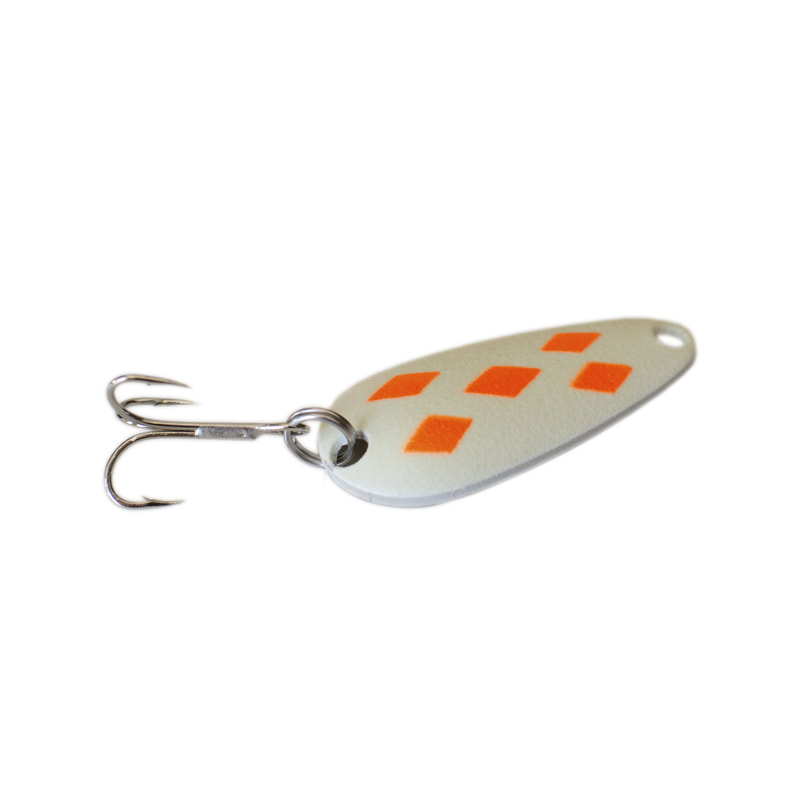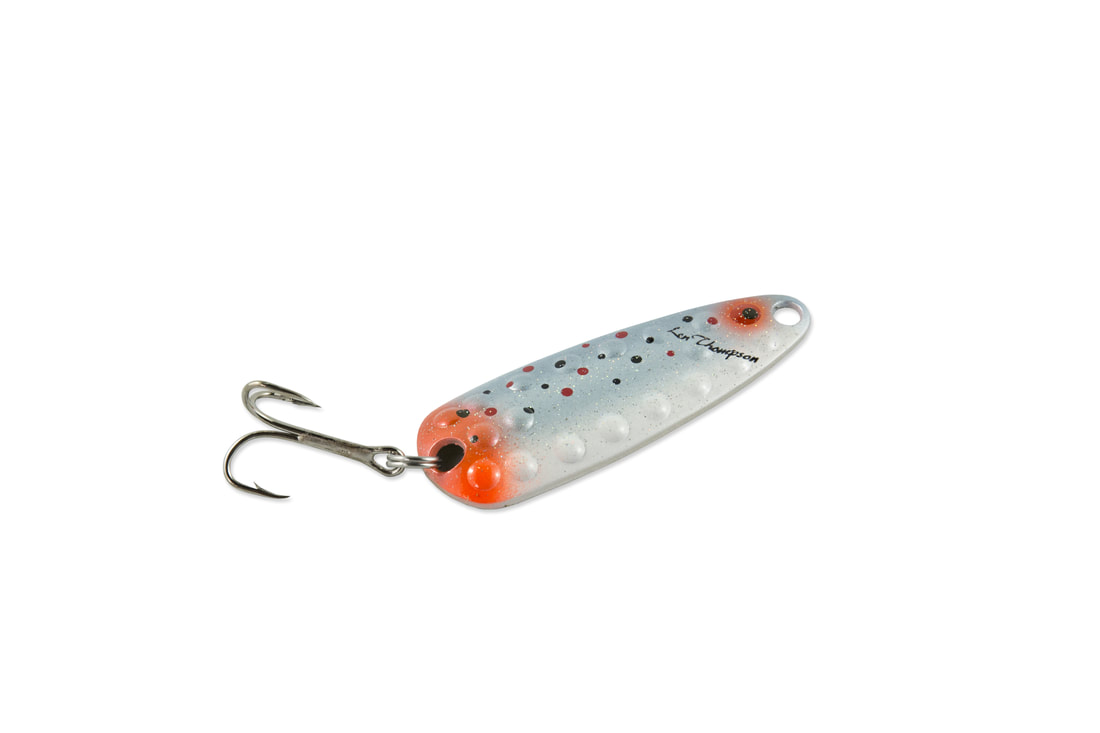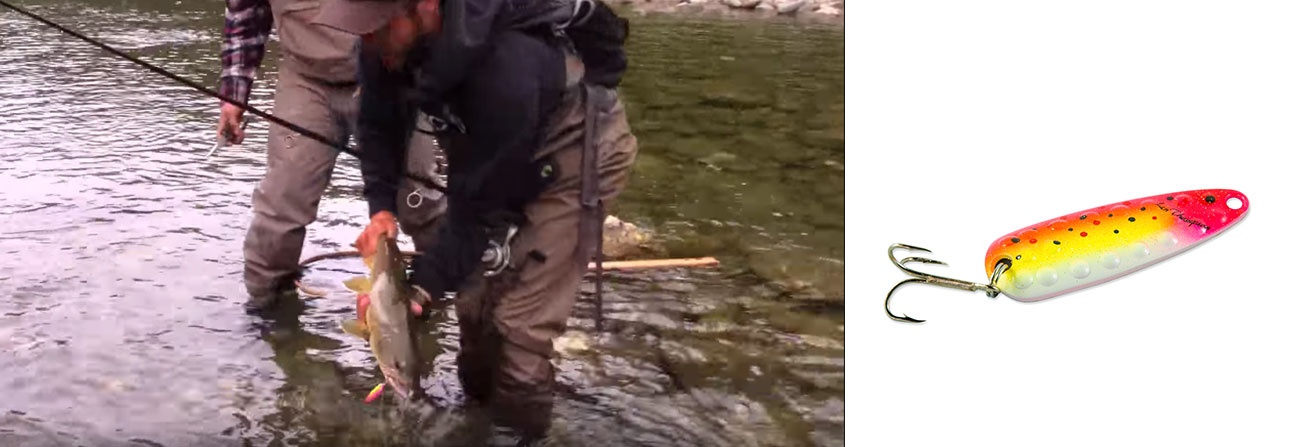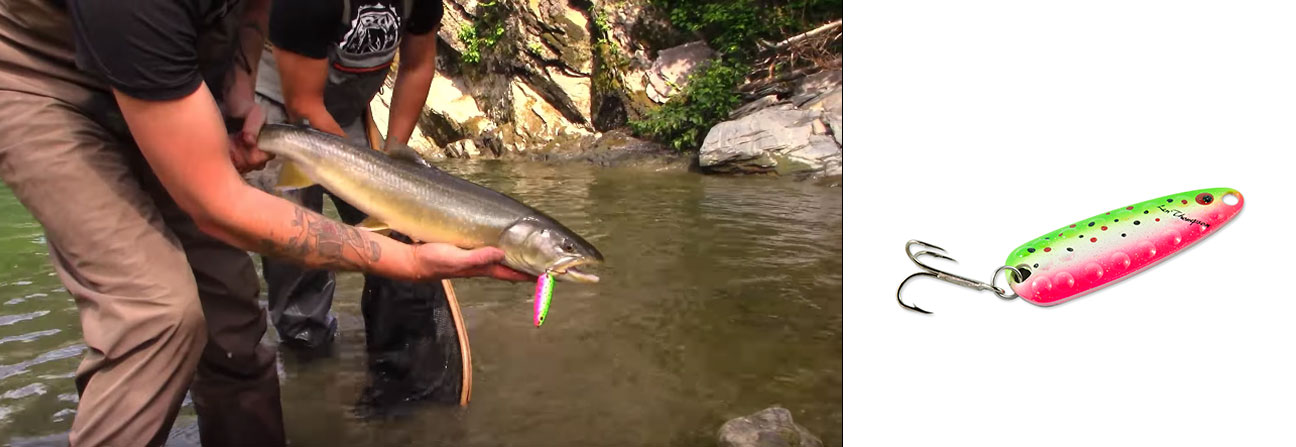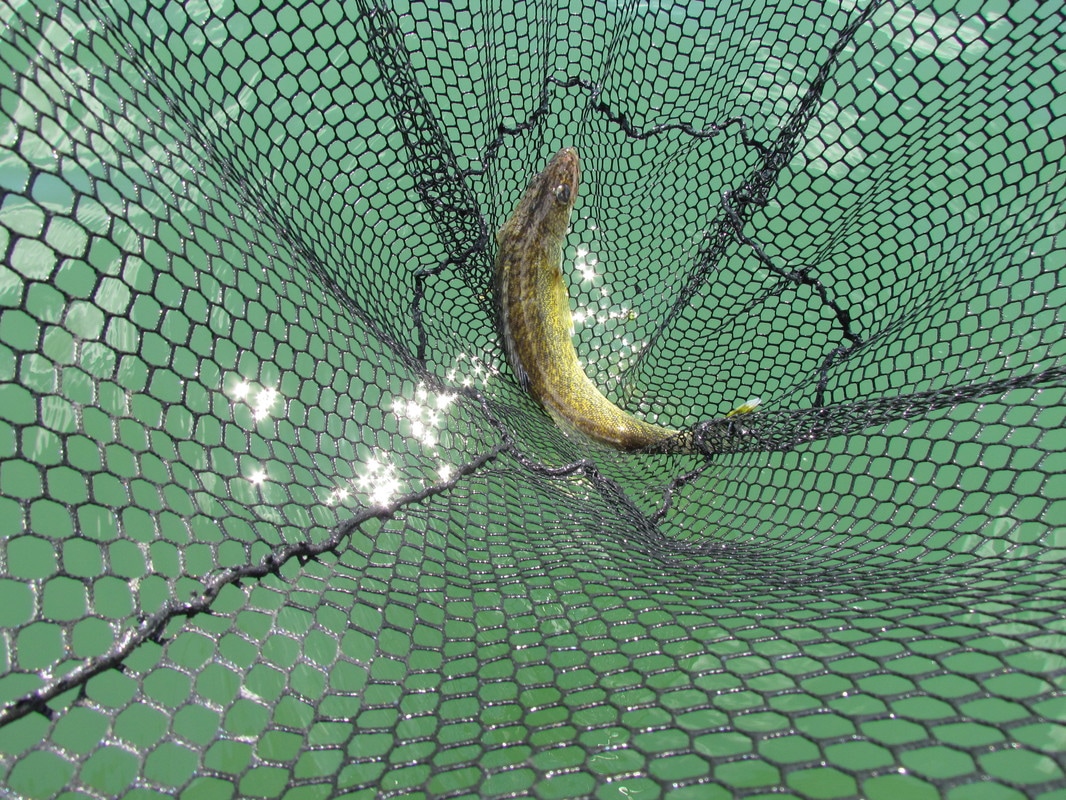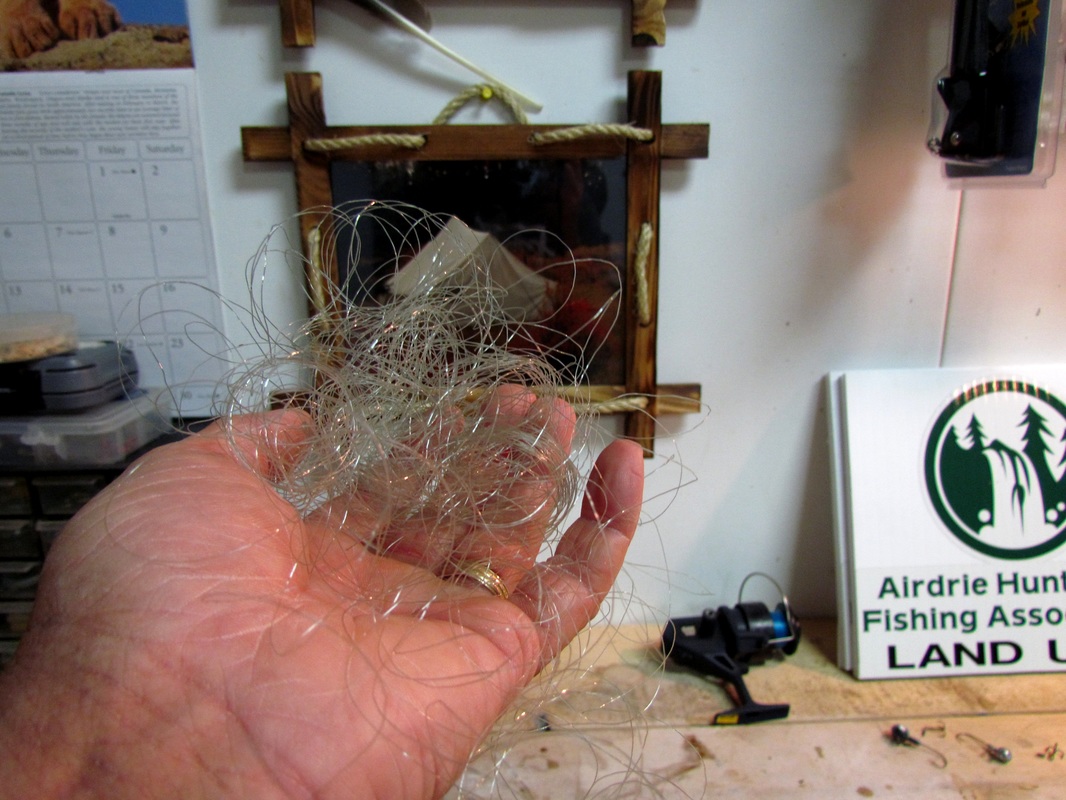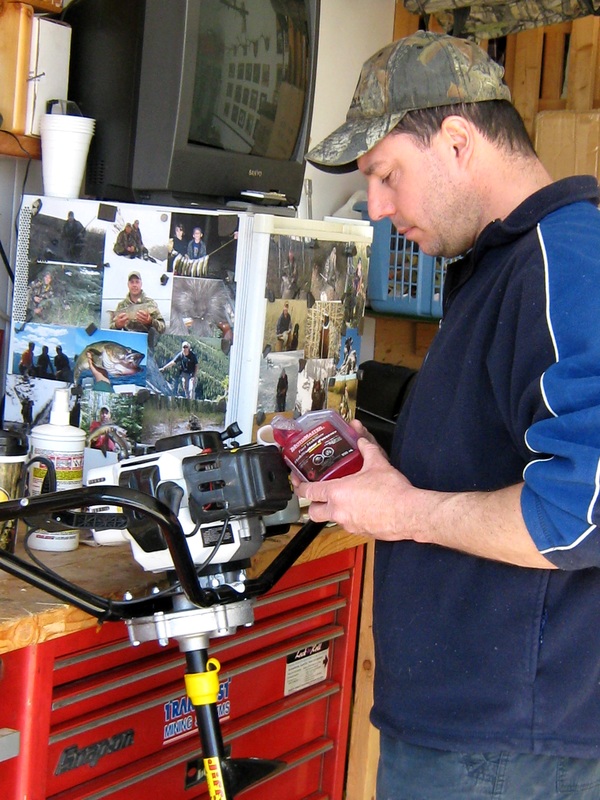|
By Lisa Roper
I find these two methods work, for me, when it comes to fishing for Walleye with spoons.
As every angler knows, each day on the water can be quite different. There are so many factors that effect fishing in open water; when the ice melts into the lake, the depth of the open water, the outside temperature, the water temperature, and the amount of feed influence how the fish are biting.
The day I caught my personal best Walleye in mid-June, we had 3 days of rain prior to that morning. We headed out fishing at 7:00 am and by 10:00am it was already hot -- the daily high hit over 30 degrees and there was an active heat warning. The fish were hitting hard in 7 to 9 feet of water. In the morning I was having success catching Walleye with a No. 2 Len Thompson Super Glow Five of Diamonds. When we returned that evening the temperature started to cool down and the Walleye (including my personal best) were hammering down on the No. 13 Grey Ghost from the Dimpled Series – single hook. Both hooks had muted colours with pops of orange which we found very effective at the time.
I am beyond blessed to have landed a Walleye that I will always be proud of.
Lisa's story and the video (above) was picked up by CBC News in June 2018 when an Edmonton reporter saw her photo getting a lot of attention on an Alberta based Facebook fishing group.
He was 28.5 inches and unfortunately I didn't have the scale on the boat with me so I was a little disappointed," she said. "I would have loved to get a weight on him but I know I can tell you he was really heavy." Roper estimates the fish was well over 10 pounds but she doesn't believe it would have beat the 15.8-pound record for the heaviest walleye caught in Alberta. Still, Roper's smiling face was evidence that this was a big deal. Read more...
4 Comments
Why spoons? Spoons can be very effective for discovering honey holes quickly. When fishing from shore, you can't rely on electronics to find fish so looking for ideal structure and using your spoons to "search and cover" is a good strategy. The key is getting the lure right to the bottom where it can stir things up and trigger aggression in nearby fish. Len Thompson's are made of heavy brass so are easy to cast long distances and they get down deep. Work smarter, not harder. TOP THREE PATTERNS1. No. 11 (1/2 oz) - Dimpled Series - Sun Set
2. No. 13 (5/8 oz) - Dimpled Series - Candy Cane 3. No. 00 (1/2 oz) - Original Series - Yellow & Red Five of DiamondsTM Note: Single hooks were substituted. 1. Rubber nets. Yes, rubber nets are a little heavier and have more resistance in the water, but they are more fish friendly than string nets. With string nets, lures often become tangled in the net and when they are still in the fish’s mouth. Untangling lures in a net is dangerous to both the angler and the fish and it requires the fish to be out of the water longer than need be. Rubber nets are more tangle resistant and the soft rubber is less abrasive to the fish’s scales and protective slime. 2. Have your camera ready. My personal rule is the fish must be back in the water in 30-seconds or less. So the first thing I do when I get to my fishing spot is I get my camera out and ready so when the time comes I’m not fumbling with a lens cap or getting my camera out of the camera bag. Same when using your cell-phone for pictures. Have it out and ready. 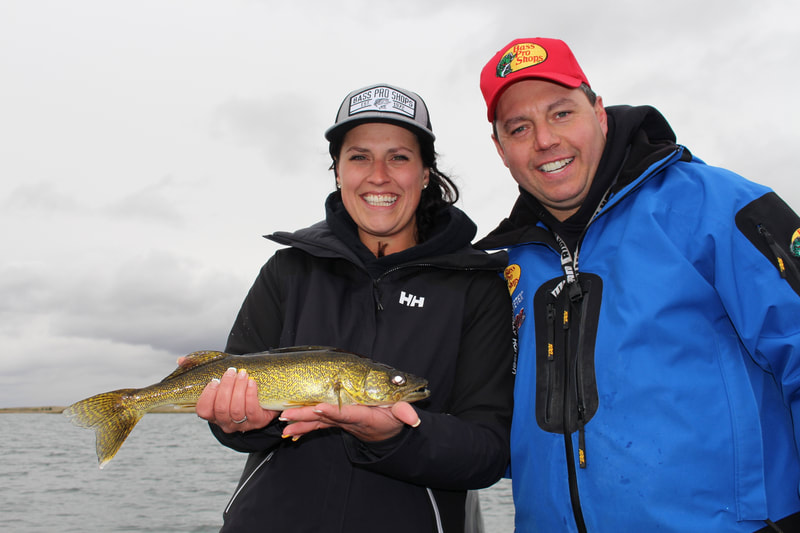 3. Have a supportive hold. When holding a fish by supporting their midsection be sure not to squeeze the fish’s midsection too hard or you run the risk of damaging the internal organs. All you really need to do is place the palm of your hand under their belly and support the fish’s weight. 4. Protect the gills and avoid the eyes. When holding a fish, make sure you place your fingers behind the fish’s gill plate, not in their gills. Damaged gills from improper finger placement is a sure way to release a fish, only to have it die later. Picking a fish up by the soft tissue of the gills would be like picking a human up by the inner tissue of their nose. Never pick up or hold a fish by their eyes. 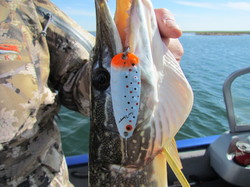 5. Be gentle. When releasing a fish back into the water, I like to support the fish under their belly and let it swim away under its own power. Sometimes I will gently hold the fish by the tail once it’s in the water until it’s ready to swim away. I never dive bomb the fish into the water and I never move it back and forth. Some believe moving the fish back and forth in the water forces water through its gills creating oxygen. However, many experts believe as you move the fish backwards it forces water past the fish’s gills in the wrong direction damaging microscopic sensories on the fish’s gills. 6. Consider... is the hook is too deep? If a fish is throat hooked and the hook can't be removed without hurting the fish, cut the line as close to the hook as possible and release the fish. Thousands of controlled studies in aquariums have shown that fish with hooks left in their mouths and throat, including barbed hooks and crankbaits, are free of the hook in 48-hours or less and many of the hooked fish during the study continued to feed. Anglers will often do more damage and even mistakenly kill a fish by trying to remove the hook(s) that are too deep. There are thousands other great tips and tricks that anglers can use to prevent a dead release that aren’t mentioned here. However, these are the six most basic ways to prevent a dead release this season. Wes David | Len Thompson Pro Staff Anglers can take advantage of this downtime by putting away their ice fishing gear and getting their fair-weather fishing gear ready for the open water season. Taking the time to properly store ice fishing gear during the off season will save you a ton of grief next winter.
While the line is removed, take the time to lubricate the gears and bearings in the reel. This is rarely done on ice fishing reels but it’s an important step in keeping ice reels in game shape. Store all fishing rods and tip-ups where nothing will be placed on top of them during the off season. Check all hooks and repair, replace and sharpen as needed.
Tip: Sporting stores usually put their remaining ice fishing gear on sale at the end of the season. Also, some stores have a recycling drop-off for used fishing line. Written by Wes David | Fishing the Wild West TV
|

